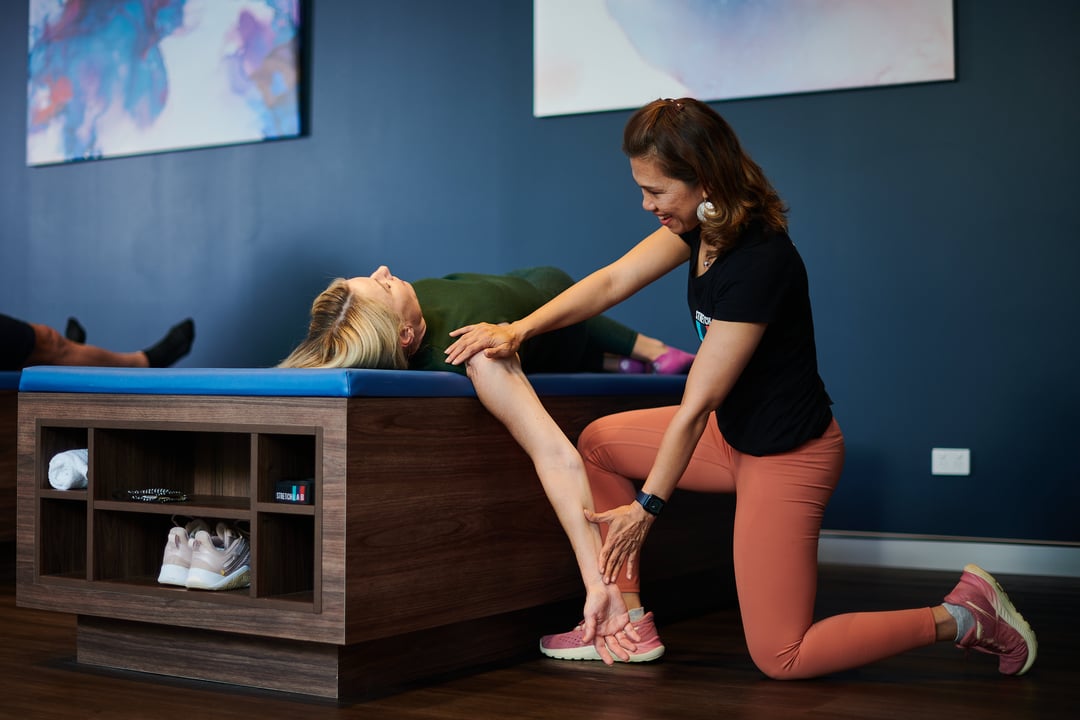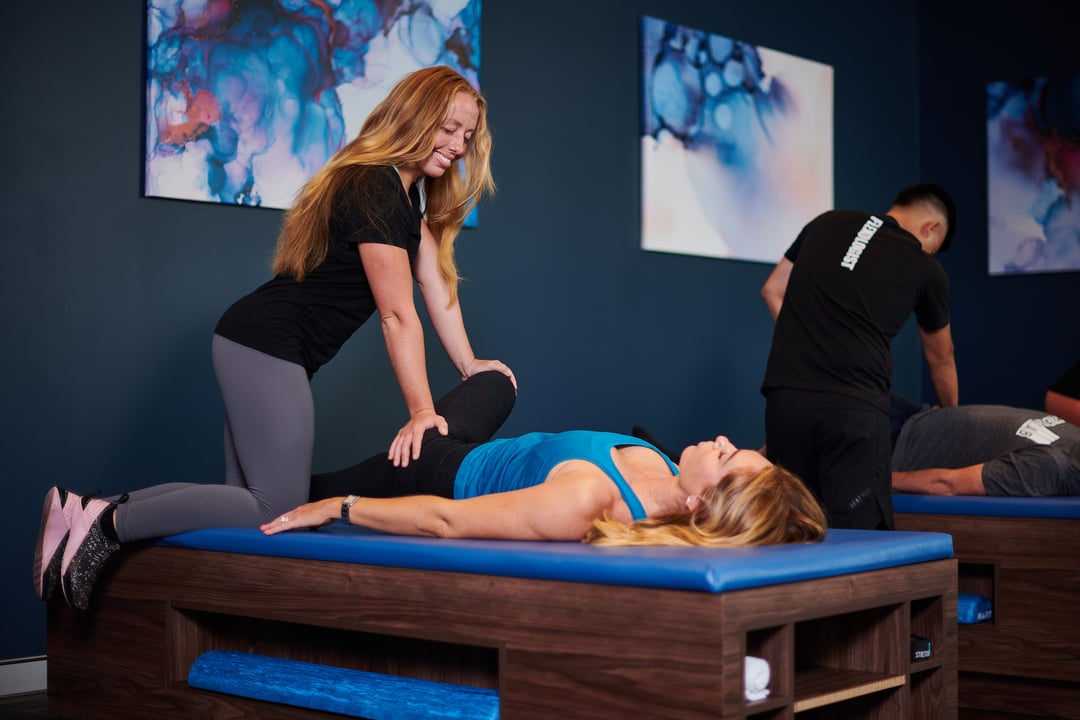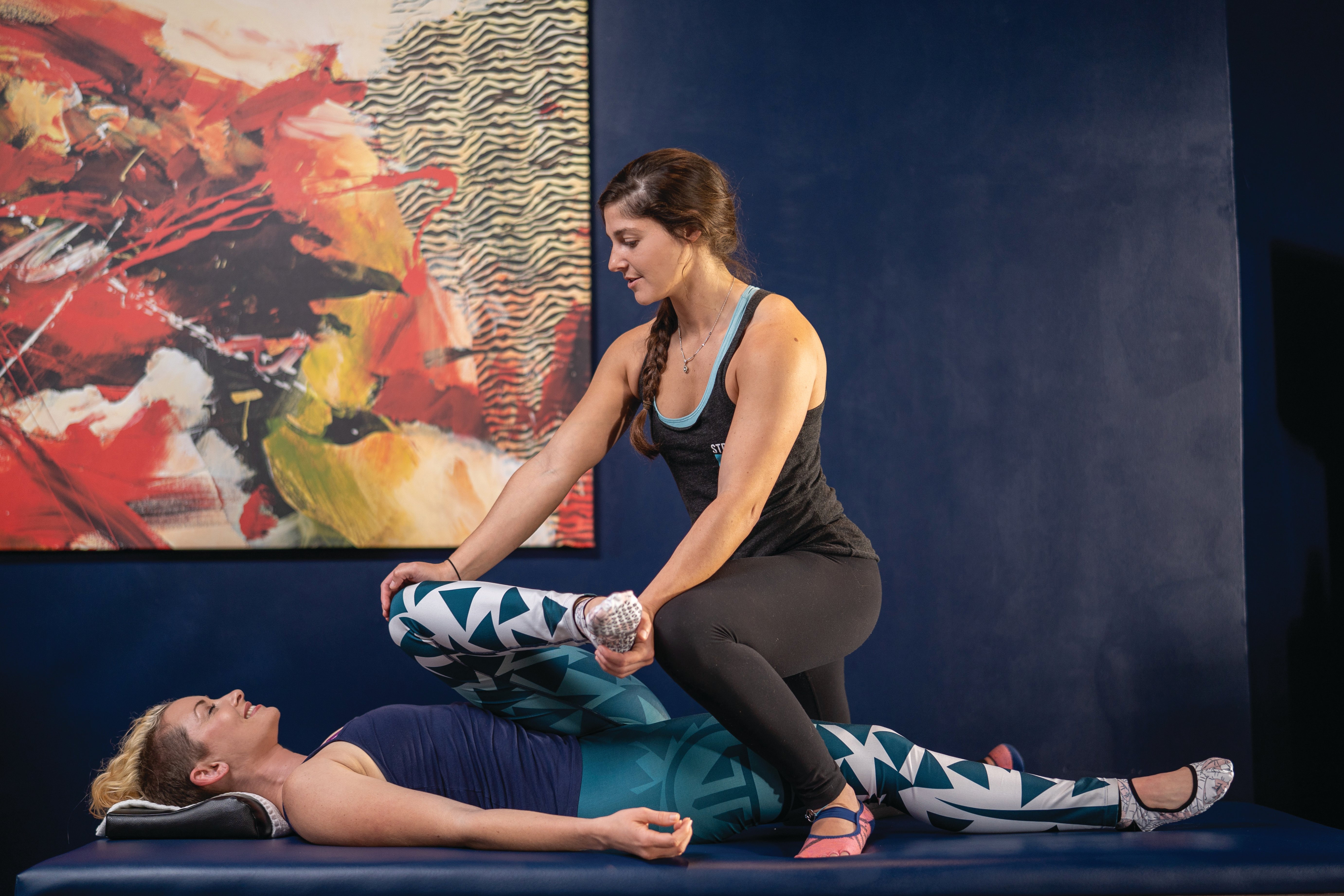Whether you're gearing up for a marathon or looking to add a little extra flexibility to your daily routine, we’ve all been told how important stretching is in keeping your body limber and ready for physical activity. But, it can be easy to overlook or forget!
Taking even just a few minutes to stretch can bring a host of benefits—from boosting your performance to reducing injuries. But here's the catch: it’s not just about stretching; it's about doing it right.
With so many techniques available, it can be confusing to figure out which stretches are best for your needs. In this post, we’re breaking down the two most common types of stretching - dynamic stretching and static stretching. We look at the differences, benefits, and the best times to use each.
Why Stretching Matters
Despite what we may think, stretching is more than a pre-workout routine. It offers a multitude of benefits for maintaining our overall health and flexibility.
When you don’t stretch—or if you move infrequently—your muscles can become short and tight. This means that when you do engage in physical activities like going for a run or even daily tasks like lifting furniture or reaching for something high, your muscles may not extend fully. This puts you at risk of strains or injuries, as your body struggles to perform movements that require a full range of motion.
So, what happens when you do stretch?
Stretching promotes better blood flow to your muscles. Increased circulation helps deliver essential nutrients and oxygen to the muscle tissues, which supports muscle repair and growth, reduces stiffness and soreness, as well as enhances overall performance and flexibility.
Simply put regular stretching not only prepares your body for physical activity but also helps it recover and stay flexible.

Dynamic Stretching vs Static Stretching: What's the Difference?
Dynamic and static stretches are two common stretching techniques. Both are effective for improving flexibility and mobility but differ in their approach and timing.
Dynamic Stretching
Dynamic stretching involves moving a muscle through its full range of motion using controlled, active movements. This type of stretching is designed to increase muscle temperature and blood flow, which can enhance athletic performance and reduce the risk of injury. Dynamic stretches are typically performed before exercise to prepare the body for physical activity.
Some examples of dynamic stretches include:
- Leg Swings: Swinging one leg forward and backward to stretch the hamstrings and hip flexors.
- Arm Circles: Rotate the arms in circles to warm up the shoulders.
- Walking Lunges: Stepping forward into a lunge position to stretch the hip flexors and quads.
- Trunk Rotations: Twist the torso while keeping your lower body still to engage and stretch the core muscles.
Static Stretching
On the other hand, static stretching involves holding a muscle in a stretched position for an extended period, typically between 15 and 30 seconds. This technique is used to gradually elongate the muscle into its full range of motion (Remember: some discomfort is normal, but your stretch shouldn’t be painful) allowing it to lengthen and relax.
Static stretching not only relaxes the muscles but also provides a sense of mental relaxation and tranquillity. It can be a great way to unwind and de-stress after a workout or a long day! Static stretching is usually done after exercise or physical activity as part of a cool-down routine.
Some examples of Static Stretching:
- Hamstring Stretch: Sitting with one leg extended and reaching toward the toes.
- Quadriceps Stretch: Standing and pulling one foot towards the glutes to stretch the front of the thigh.
- Calf Stretch: Pressing the heel of one foot against a wall while keeping the leg straight.
Read More: What Are Static Stretches?

What is PNF stretching?
PNF stretching, short for Proprioceptive Neuromuscular Facilitation, is a more advanced form of stretching and flexibility training. It combines static stretching and muscle contraction to enhance flexibility and range of motion.
Where traditional static stretching involves holding a muscle in a stretched position to lengthen it, PNF stretching takes a more active approach. It combines passive stretching, where external force is used to lengthen the muscles with isometric contractions, where the muscle contracts without changing length.
Put simply, PNF stretching involves first contracting the targeted muscle against resistance, followed by a deep stretch of the muscle once it has relaxed. This method not only helps to lengthen the muscle more effectively but also increases the range of motion and improves overall flexibility.
Benefits of PNF Stretching:
- Enhanced Flexibility: By combining contraction and relaxation, PNF stretching can lead to significant improvements in flexibility and joint mobility.
- Injury Prevention: Reduces muscle tension and enhances joint mobility, which can help prevent injuries.
- Improved Athletic Performance: Enhances muscle performance by increasing range of motion and flexibility.
- Posture Improvement: Helps in maintaining better posture by relieving tightness and promoting balanced muscle function.
- Relief from Muscle Tightness: Effective in alleviating everyday muscle discomfort and tightness, making it beneficial for general well-being.
Read More: What Is PNF Stretching? A Closer Look At This Powerful Stretching Technique
When To Use Different Stretching Techniques?
Understanding when to use each type of stretching can boost your routine and help you get the most out of your workouts.
- Dynamic Stretching: Dynamic stretching is best incorporated into your warm-up routine before exercising or participating in sports. It helps to get your blood pumping, warm up your muscles, and set you up for a more intense workout.
- Static Stretching: On the flip side, static stretching is your best for cooling down after a workout. It’s great for easing muscle soreness and helping your muscles recover. Stretching out after your activity can help you unwind and feel more flexible as you wrap up your session.

Discover the Benefits of Assisted Stretching
Stretching is more than just a warm-up or cool-down routine; it's an essential part of a well-rounded fitness plan, offering unique benefits at different times. Dynamic stretching is fantastic for warming up and getting your body ready for action, while static stretching is perfect for cooling down and aiding in recovery. By incorporating both into your routine, you can improve your flexibility, prevent injuries, and enhance your performance.
Ready to take your stretching to the next level? Stretch Lab offers personalised assisted stretching classes designed to help you achieve your flexibility goals and enhance your overall well-being. Whether you’re looking for guidance on perfecting your technique or need a bit of extra support, our expert team is here to help!
With studios across Australia, there's a convenient location near you! Book your first session today and let us help you stretch smarter and feel your best!



